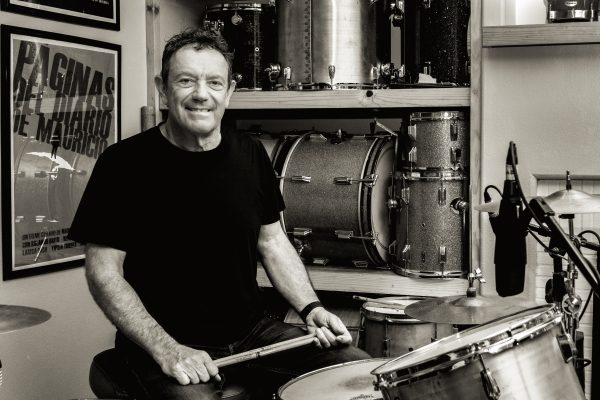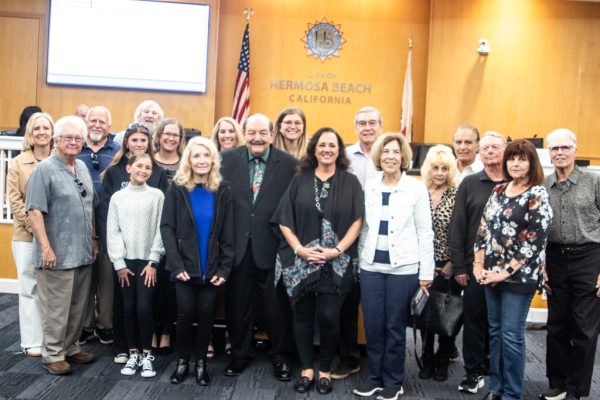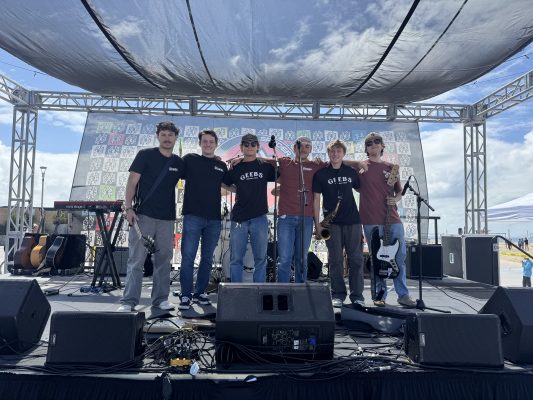
After over seven hours on Tuesday and three prior city council meetings dedicated to making a decision about the AES power plant, the Redondo Beach City Council decided to postpone a decision on passing a resolution opposing the repowering until July 10. Three members voted in favor of gathering more information before declaring a stance, while two opposed the decision to postpone. This came after city attorney Mike Webb informed them in an earlier meeting that making a decision has no legal ramifications.
The discussion about the power plant decision didn’t begin until 11 p.m. By then, many people who had previously requested to speak during the public hearing had left and only about 40 people were still in the chambers when the meeting ended at about 1:30 a.m.
“It’s a travesty we got to this at 11 at night,” said Councilman Bill Brand, who is in favor of opposing the plant. “I’m embarrassed. A lot of people left and it’s a shame, but I’m getting the feeling that it doesn’t matter how many people come in here, it’s not going to have an impact. It’s going to be difficult to have the council come out against the power plant.” Brand also added that both Senator Ted Lieu and Congresswoman Janice Hahn have come out publicly against the plant.
Councilmember Steve Diels also voted with Brand but for different reasons. He made it clear that the potential city council decision to oppose the repowering may not carry much weight when the AES plant applies to the California Energy Commission for a permit to repower.
“It makes sense to me that if we want to control our destiny [we need to] to get control of the property,” said Diels. “The people we need to work with are the people who own the property. I don’t trust that changing the zoning and that an initiative will get past State mandates to clean our air.”
Councilmen Pat Aust, who has lived in Redondo Beach since 1948, “the longest of anyone in this room,” wasn’t convinced that everybody in Redondo Beach would support a stance to oppose the plant and was wary of a citizen-led initiative tied to set zoning and suggested that the city take a vote to determine the decision.
“This issue here is do you want the power plant here or not,” said Aust. “So vote on it!”
Steve Aspel was cautious of taking a stance because he was worried that AES could potentially stop their plans for repowering and simply install new cooling towers while keeping the existing infrastructure in place.
“The worst thing that could happen is if they didn’t get their permit and didn’t have any reason to sell to a developer,” said Aspel. “Their job is to produce electricity, if it’s not worthwhile to sell it they’ll let it landbank and just sit there. It’s not their problem, it’s our problem.”
Eric Pendergraft, the president of AES Southland warned the council that it is wise to think about the consequences of other alternatives that will be considered, and that alternatives increase the likelihood that the old plant will stay. He also added that “we’re not required to shut down — we’re not required to retire… [we’re] only required to reduce the amount of ocean water used”.
“We think it’s premature to pass a resolution opposing us,” Pendergraft added.
Jennifer Didlo from AES also submitted updated photo renderings of the possible new power plant, noting that the three new stacks would be 100 feet shorter than the existing ones, and other equipment would only be 90 feet tall. She also announced that the new footprint would only be 12 acres, leaving the rest of the space for alternative uses at no cost to the city.
After hearing from Pendergraft about their updated plan for the space, Mayor Mike Gin took pause on the issue and felt that more information was needed to make an informed decision.
“There’s no question that there’s been some issues with the current power plant,” said Gin. “But up until now we haven’t known exactly what AES is proposing on that site… It’s not just yes or no on a power plant, but what we want to see as the vision on that site. Maybe philosophically it would be great to not have a power plant down there, but if we take that position now without even knowing what the project might be, without the opportunity to collaborate with the property owner—what opportunities might we have for a future non industrial use for that site? There is merit to really knowing what exactly we’re going to be dealing with.”
Marna Smeltzer, representing the Chamber of Commerce, believed that making a decision at present would be premature and suggested the council wait to make a decision. “Adopting a resolution is premature at this time and we believe the process will unfold. [We] will eventually see the entire plan proposed by AES. [We] can always revisit the resolution, but move forward without prejudgment.”
Redondo Beach citizen Kelly Charles was angry the council waited so late to begin their discussion, and was disheartened by how many people had to leave because of the time. “Isn’t Redondo Beach supposed to be a Blue Zone and a Vitality City? Do you think a Vitality City would have this monster in their backyard? It was built in a different time, in a different age. This is not the time or age for this anymore.”
The council directed city staff to hire an independent consultant to perform an amortization report on the existing plant so they can make a more informed decision. Council members also voiced an interest in becoming an intervener in the repowering process so they could be more involved in AES’s permitting process and directed staff to prepare a potential budget for the process.











